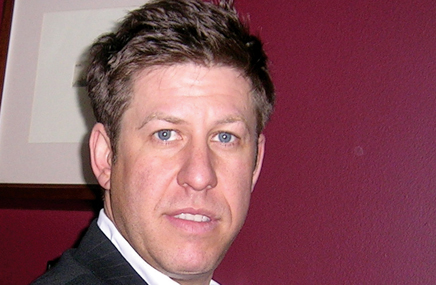STRIKEFORCE Communications founder and president Mike Rutstein needs little prodding to discuss his company’s successes. But unlike many of his peers, Rutstein doesn’t hesitate to expound on what he perceives to be the industry’s most stubborn problems.
In a recent op-ed piece, Rutstein chides individuals and entities within the healthcare-marketing loop for attempting to excuse, explain and otherwise wish away their creative lethargy. “As an industry we need to stop apologizing for being in a highly regulated category,” he writes. “…[It] is no excuse for flat, functional creative work or expected metaphors.”
By all indications, Rutstein’s passion permeates the entire STRIKEFORCE organization, which differs from traditional firms in attitude and approach. In its third year of existence, STRIKEFORCE pushes what Rutstein calls “an open-source agency model.” How it works is no great mystery to anyone who has ever kept a stable of freelancers on speed-dial: Personnel-wise, the agency ebbs and flows on an assignment-by-assignment basis, matching talent to task.

STRIKEFORCE launched the model at the peak of the recession and found that clients embraced it. “Agencies use whoever and whatever is available. They take the same people, who might not have expertise across all categories, and spread them thin with multiple clients,” Rutstein says. “That’s great for the agency but not so much for the clients.” He’s surprised, in fact, that more firms haven’t embraced a similar scheme.
One way that STRIKEFORCE keeps its eye on such matters is through an advisory board which meets on a quarterly basis to discuss industry and agency-specific issues. “Basically, we stole a page from the playbook of successful companies, who sometimes feel they’re too close to their own work to judge it,” Rutstein says. Not surprisingly, given the model, STRIKEFORCE is largely populated by the type of experienced staffers that usually sit on such boards. The firm’s prize recent hire was former Draftfcb exec Patricia Prugno, who signed on as partner and managing director.
As for client work, Alcon expanded its relationship with the firm during the last year. But it’s the work STRIKEFORCE did for Teva Pharmaceuticals, which hired the agency as consumer and professional AOR for its ParaGard contraceptive and for growth hormone Tev-Tropin, that Rutstein singles out.
Sounding a common refrain, Rutstein describes the birth-control category as “a sea of sameness,” owing to the staleness of its imagery. “There are smiling, happy women everywhere you look. There’s not a lot of drama,” he says. With ParaGard, the firm took a 20-year-old brand that was a distant number two in its category and reinvented it, grounding its messaging in the language and images of healthy living. The campaign, which featured figures cut out of paper and stop-action animation, proved a winner.
“We were true marketers with that one,” Rutstein says. “We didn’t just take a bunch of claims and an expected metaphor, and hope to get results.”
From the July 01, 2012 Issue of MM+M - Medical Marketing and Media








